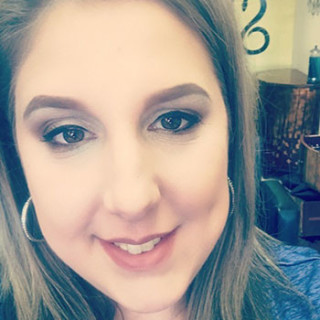
Having worked as a retail pharmacist for 17 years, I have learned many tips that can help ease communication between doctor’s offices and pharmacies. Pharmacists are overworked and almost never have enough help, so when we call you, it’s not because we want to annoy you or waste your time. Here are some tips that will help you become every pharmacist’s favorite doctor.
Think Before You Prescribe That Opioid
With the opioid epidemic at crisis level, all healthcare professionals need to be more vigilant. Is the patient suffering with cancer pain, or is the patient coming back month after month for a prescription of a too-high dose of oxycodone that was originally given for a surgery one year ago? If that opioid is being prescribed in conjunction with a benzodiazepine, it’s time to start tapering. According to the FDA, combining these drugs comes with risks of “extreme sleepiness, respiratory depression, coma and death”
Insurance companies are starting to realize this and beginning to reject prescriptions, not only for the combination of benzodiazepine plus opioid, but often for high dose or quantity. Pharmacists and physicians need to work together to help these patients. Not only are patient’s lives at risk, our licenses are as well. Before you mindlessly send off another prescription, think — is this really needed? Can we start tapering? Does this patient exhibit signs of substance use disorder, and if so, what are the next steps? Have those difficult conversations with your patients.
It is also important to pay attention to the date on the prescription. Pharmacies are enforcing strict policies on filling/refilling of controlled/narcotic prescriptions. For example, if a patient fills a 30-day supply of oxycodone on June 1, the next due date would be July 1. Most pharmacies have policies to only fill these prescriptions a maximum of one or two days early. Filling a prescription 3 days early every month would supply the patient with an entire extra month of medication after just ten months. It is helpful when the doctor writes on the prescription (or in the comments of the electronic prescription) “Please fill on or after June 29,” as well as communicates this to the patient.
Also, please include a diagnosis code, especially with the larger quantities/dosages. ALWAYS write out the quantity. Once, I had a patient change #10 to #60. I asked, “Did you change the number?” and he admitted it. It is best when you write the number in parenthesis too, i.e., #60 (SIXTY). And never forget to sign and date the prescription, and be sure your DEA and NPI are on the prescription.
Always Check Allergies
I can’t even tell you the number of times a patient comes in with a prescription for an antibiotic they are allergic too. In fact, I have even had the same patient with a penicillin allergy come in with a prescription for amoxicillin three different times in one year, and each time I had to call and have it changed. Not only does it tie up the pharmacist and inconvenience the doctor, but the patient who is feeling sick is the one who has to wait. A quick question (and updating the electronic record), before prescribing an antibiotic will save everyone a lot of time!
Be Dedicated to the Pharmacy
My favorite doctor’s office has an extremely efficient nurse, Julie. She knows that the doctor will not reply to electronic refill requests in a timely manner, so she asks pharmacies to change the preferred contact method to fax, where she is able to quickly return our faxes.
Figure out the best way to address prescription refills. Have a staff member assigned to taking care of refills by phone, fax, voicemail. We like to take care of our patients and keep them happy and taking days to reply to a request for a maintenance medication is frustrating for the patient and pharmacy.
Also, train your staff to always check with you on pharmacy questions. Sometimes electronic prescriptions come over with crazy directions such as “Take 25 tablets daily.” The most annoying thing is when we call to clarify, and the person answering the phone says, “Well, that’s what the doctor said, so it’s correct.” No, it’s not.
Also, on the topic of electronic prescriptions, never tell a patient, “I sent it over, it will be ready when you get there.” Sometimes, especially during busy hours, prescriptions can take up to an hour to arrive. Pharmacies are processing many other prescriptions at the same time, and someone who doesn’t work at the pharmacy is not equipped to tell the patient when their prescription will be ready (although we will be glad to tell the patients that they don’t have to wait when they come to your office, ha-ha!)
Also, please do not tell the patient how much a prescription will cost. You don’t know, we don’t even know until we process the prescription with the insurance card.
Speaking of insurance, pharmacists also do not like prior authorizations. We don’t send them to annoy you, as some doctors think we do. So, when you get a prior authorization request, have that dedicated staff person (better yet, if you have a busy office and the budget to do so, hire a part time pharmacist to handle your prior authorizations!) either take care of it in a timely manner, or consult with you about changing the medication to something that is covered. Whatever you do, we just want the patient to get the medication that they need, in a reasonable amount of time.
Use the Comment Section
On electronic prescriptions, we love when doctors use the comment section to clarify something that may raise a question. For example, say your patient went from atorvastatin 10 mg to atorvastatin 80 mg. Since it wasn’t a small increase to the next dose, most pharmacists would probably call the doctor’s office to see if it was an intentional increase or an error. If you make a dosage adjustment it always helps to make a short note in the comments: “note- dosage increase from 10 to 80”
Or, say you’re aware of a drug interaction but you have already discussed it with the patient — if you put a note in the comments such as “patient will hold warfarin while on fluconazole” this will save us all a lot of time.
Be Friendly!
Being friendly doesn’t cost anything. We are all swamped in our respective professions and dealing with different challenges. And feel free to ask our recommendations on anything pharmacy related, that’s what we are here for.
Karen Berger, PharmD, graduated from the University of Pittsburgh School of Pharmacy in 2001. After working many years in chain pharmacies, she currently enjoys working as a pharmacist at an independent pharmacy.







